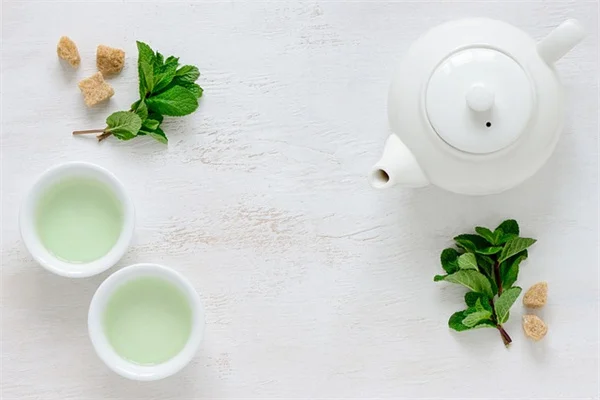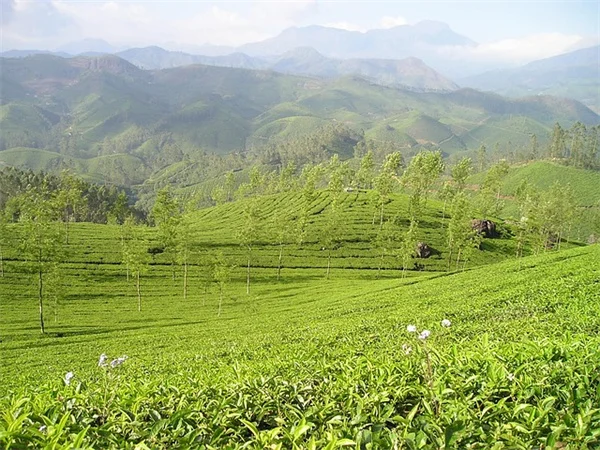Advertisement
H3N2 flu outbreak in India - should you be worried? The answer is: yes, but don't panic. India's health ministry has confirmed two deaths from this influenza strain in Karnataka and Haryana. While this might seem like a small number, here's why we're paying attention: H3N2 is the same strain that's been hitting the U.S. hard this year, and it's known for causing more severe illness in kids and seniors. I've been tracking flu patterns for years, and here's what you need to understand - India's low vaccination rates and high pollution levels create a perfect storm for flu complications. But the good news? We've got effective vaccines and treatments available right now.
E.g. :How to Stop Nightmares Fast: 3 Science-Backed Dream Hacks That Work
- 1、H3N2 Flu Strain: The Current Situation in India
- 2、Understanding the H3N2 Virus
- 3、What Makes Some Flu Seasons Worse Than Others?
- 4、Protecting Yourself and Your Community
- 5、Looking Ahead: What We Can Expect
- 6、Beyond the Basics: What Else You Should Know About H3N2
- 7、Debunking Common Flu Myths
- 8、Innovations in Flu Prevention
- 9、Cultural Factors in Flu Prevention
- 10、Your Personal Flu Defense Plan
- 11、FAQs
H3N2 Flu Strain: The Current Situation in India
Why This Outbreak Matters
You've probably heard about the H3N2 flu strain making headlines in India. Two deaths have been reported so far - one in Karnataka and another in Haryana. While this might not sound like a huge number, here's why we should pay attention:
This particular strain doesn't play fair. It's like that one kid in dodgeball who always aims for the vulnerable players - young children and older adults tend to get hit hardest. In India, the situation gets even trickier because of low vaccination rates and heavy air pollution that acts like a multiplier for flu symptoms.
India's Flu Season Patterns
India typically gets two waves of seasonal flu each year:
| Peak Season | Months | Characteristics |
|---|---|---|
| First Peak | November - February | Cooler, drier weather |
| Second Peak | June - September | Monsoon season |
Dr. Amesh Adalja from Johns Hopkins University points out that while this outbreak is happening a bit late in the season, it's still within the normal flu window for the northern hemisphere. "Flu seasons don't all follow the same schedule," he reminds us.
Understanding the H3N2 Virus
 Photos provided by pixabay
Photos provided by pixabay
Flu Virus Types 101
Let's break this down simply. There are two main types of flu viruses that bother humans:
- Influenza A - The bigger troublemaker with subtypes like H1N1 and our current star, H3N2
- Influenza B - Usually milder, with Yamagata and Victoria lineages
Here's something that might surprise you: Did you know that in the U.S. this year, 99% of flu hospitalizations were caused by H3N2? That's according to epidemiologist Jennifer Horney from the University of Delaware. This strain doesn't just spread easily - it packs a mean punch, especially for adults over 65.
Recognizing H3N2 Symptoms
If you're wondering whether that sniffle might be H3N2, watch for these common symptoms:
Cough, congestion, sore throat, fever, headache, chills, body aches, and fatigue - basically feeling like you got run over by a truck. The good news? We have effective antiviral medications like oseltamivir (Tamiflu) that can help knock it out faster.
What Makes Some Flu Seasons Worse Than Others?
The Vaccine Match Game
Imagine going to a costume party where everyone dressed as the same celebrity except you. That's kind of what happens when the flu vaccine doesn't match the circulating strains well. According to Dr. Horney, two key factors determine how bad a flu season gets:
- How well the vaccine matches the actual viruses going around
- How many people actually get vaccinated
This year, the CDC says we've got a good match with the vaccine. But here's the catch - fewer people are getting vaccinated than usual. In India, the numbers are especially concerning. A 2017-2018 study found that only 1.5% of 65,000 Indian adults over 45 had ever received a flu shot!
 Photos provided by pixabay
Photos provided by pixabay
Flu Virus Types 101
Now, here's something you might not have considered. High air pollution - like what many Indian cities experience - makes respiratory viruses even worse. Dr. Adalja explains it simply: "Your lungs already have to work harder when the air quality is poor. Add a respiratory virus to that, and it's like trying to run a marathon while breathing through a straw."
This double whammy helps explain why India's flu mortality rate is more than twice that of the U.S., where we typically see 30,000-70,000 flu deaths annually.
Protecting Yourself and Your Community
Vaccination: Your Best Defense
I know, getting a shot isn't anyone's idea of fun. But think of it this way - would you rather spend 10 seconds with a tiny needle or 10 days feeling absolutely miserable? This year's vaccine is well-matched to the circulating strains, including H3N2, and we've got effective antiviral treatments if you do get sick.
Here's a question many people don't ask: Why do we need a new flu vaccine every year? The answer's simple - flu viruses are shape-shifters. They constantly change their appearance (to our immune systems, at least), so last year's armor might not protect against this year's attacks.
Beyond the Vaccine: Everyday Protection
Vaccines are crucial, but they're not the only tool in our toolbox. Simple habits can make a big difference:
- Wash your hands like you just handled raw chicken and need to answer your phone
- Cough into your elbow like a vampire hiding his face
- Stay home when you're sick (your coworkers will thank you)
- Consider wearing masks in crowded places during peak flu season
Remember, protecting yourself also helps protect those more vulnerable people around you - grandparents, babies, and anyone with a weakened immune system.
Looking Ahead: What We Can Expect
 Photos provided by pixabay
Photos provided by pixabay
Flu Virus Types 101
Health authorities in India are keeping close watch on this H3N2 outbreak. While two deaths are two too many, it's important to keep perspective - H3N2 circulates every year, and we have tools to fight it.
The slightly late timing of this outbreak serves as a good reminder: flu doesn't care about our calendars. It shows up when conditions are right, which is why staying vigilant year-round matters.
The Bigger Picture
This situation highlights some important global health realities. First, viruses don't respect borders - what happens in India matters everywhere. Second, environmental factors like air pollution can turn a manageable health issue into a more serious one. And third, vaccination is one of our most powerful tools, but only if people actually use it.
As we continue monitoring this outbreak, the most important thing you can do is stay informed and take reasonable precautions. The flu might be a familiar foe, but that doesn't mean we should underestimate it - especially when H3N2 is involved.
Beyond the Basics: What Else You Should Know About H3N2
The Economic Impact of Flu Outbreaks
When we talk about flu, we often focus on health impacts, but let's talk dollars and cents for a minute. Did you know that seasonal flu costs the U.S. economy about $10.4 billion annually in direct medical expenses? That's enough to buy every American a fancy coffee every week for a year!
In India, the economic toll hits differently. Many workers don't have paid sick leave, so they show up to work sick, spreading the virus further. A single day's wages lost can mean a family goes hungry. This creates a vicious cycle where people can't afford to stay home when they're contagious, making outbreaks worse.
How Climate Change Affects Flu Patterns
Here's something you might not have connected: climate change is messing with flu seasons too. Warmer winters can actually extend flu seasons in some regions, while extreme weather events displace people into crowded shelters - perfect conditions for viruses to spread.
Think about it - when was the last time you saw a "normal" flu season? They're becoming as unpredictable as a teenager's mood swings. Researchers are finding that shifting weather patterns may be altering traditional flu season timelines worldwide.
Debunking Common Flu Myths
"The Flu Shot Gave Me the Flu" - Fact or Fiction?
Let's settle this once and for all: No, the flu vaccine cannot give you the flu. The injectable vaccine contains inactivated virus (dead virus), and the nasal spray uses weakened virus that can't cause infection. So why do some people feel crummy after getting it?
Your immune system is basically doing push-ups to get stronger. That mild achiness or low-grade fever? That's your body building protection, not actual flu. It's like complaining that your muscles hurt after a good workout - it means it's working!
Natural Immunity vs. Vaccination
Some folks argue that getting the actual flu provides better immunity than vaccination. While there's some truth to this, it's like saying jumping off a cliff is better than taking the stairs - sure, you'll reach the bottom faster, but the risks aren't worth it.
Natural infection might offer broader protection, but you're playing Russian roulette with potential complications. The vaccine gives you protection without the risk of hospitalization or death. Seems like a no-brainer to me!
Innovations in Flu Prevention
The Quest for a Universal Flu Vaccine
Scientists are working on what could be the holy grail of flu prevention - a universal vaccine that would protect against all flu strains, potentially eliminating the need for annual shots. How close are we?
Several candidates are in clinical trials right now, targeting parts of the virus that don't change much between strains. It's like finding that one hairstyle that looks good on everyone - challenging, but not impossible!
High-Tech Tracking Systems
Public health agencies are getting smarter about tracking flu. Google Flu Trends (remember that?), wastewater monitoring, and even AI models that analyze social media posts about flu symptoms are helping predict outbreaks before they happen.
In India, some hospitals are using mobile apps to track flu cases in real-time. It's like Waze for disease outbreaks - helping public health officials see where the "traffic jams" of illness are forming.
Cultural Factors in Flu Prevention
Traditional Remedies vs. Modern Medicine
In many Indian households, you'll find a fascinating mix of modern medicine and traditional remedies when dealing with flu. From turmeric milk to steam inhalation, these practices often complement medical treatment.
While some home remedies can provide symptom relief (chicken soup isn't just Jewish penicillin!), they shouldn't replace vaccination or antiviral medications when needed. It's about finding the right balance between tradition and science.
The Social Stigma of Vaccination
In some communities, there's still a stigma around getting vaccinated - seen as a sign of weakness or distrust in the body's natural defenses. How do we change this perception?
We need more local champions - trusted community members who can share their positive vaccination experiences. When your favorite aunt or respected neighbor talks about getting vaccinated, it carries more weight than any government campaign.
Your Personal Flu Defense Plan
Building Your Immune System Naturally
While vaccines are crucial, there's plenty you can do daily to support your immune system. Regular exercise, adequate sleep, stress management, and a diet rich in fruits and vegetables all help your body fight off infections better.
Think of it like training for battle - vaccines provide the specialized weapons, but your overall health determines how well your army fights. You wouldn't send exhausted, malnourished soldiers to war, would you?
Creating a Sick-Day Preparedness Kit
Here's a pro tip: prepare your flu-fighting kit before you get sick. Stock up on:
- Electrolyte drinks (because dehydration makes everything worse)
- Comfort foods that are easy to digest
- Basic medications like acetaminophen or ibuprofen
- Thermometer and pulse oximeter (to monitor your condition)
It's like preparing for a snowstorm - when it hits, you'll be glad you stocked up in advance instead of braving the elements while feeling awful.
E.g. :The recent H3N2 viral outbreak in India, 2023: Is it worrying? - PMC
FAQs
Q: How dangerous is the H3N2 flu strain compared to other types?
A: Let me break it down for you - H3N2 is one of the more severe flu strains we see regularly. In the U.S. this year, it's responsible for about 99% of flu hospitalizations according to epidemiologist Jennifer Horney. What makes it particularly nasty? It tends to hit older adults harder than other strains, and it spreads more easily. We've seen it cause worse flu seasons overall when it's the dominant strain. But here's the thing - while it's more severe, we're not talking about some mysterious new superbug. It's a known quantity that we have vaccines and treatments for.
Q: What are the main symptoms of H3N2 influenza?
A: If you're wondering whether that cough might be H3N2, here's what to look for: fever, cough, sore throat, body aches, headache, chills, and fatigue. Basically, you'll feel like you got hit by a truck. The symptoms are similar to other flu strains but might be more intense with H3N2. One tip from my experience - this strain often comes with a nasty cough that lingers. If you're in a high-risk group (like seniors or young kids) and develop these symptoms, don't wait it out - see a doctor because we have antiviral medications that can help.
Q: Why is the H3N2 outbreak in India particularly concerning?
A: Great question - there are three big reasons this has our attention. First, India's flu vaccination rates are shockingly low (only about 1.5% of adults in one study). Second, the heavy air pollution in many Indian cities makes respiratory infections worse - it's like adding fuel to the fire. Third, India's population density makes it easier for flu to spread rapidly. Put these factors together and you've got a situation where what might be a manageable flu strain elsewhere becomes more dangerous. But remember - the tools to fight it (vaccines, meds, precautions) are the same ones that work everywhere.
Q: How effective is this year's flu vaccine against H3N2?
A: Here's some good news - the CDC reports this year's flu shot is well-matched to circulating strains, including H3N2. In my professional opinion, that makes getting vaccinated more important than ever. But (and this is a big but) the vaccine's effectiveness depends on two things: how well it matches the actual viruses circulating (which is good this year) and how many people actually get vaccinated. I can't stress this enough - a vaccine can't protect you if you don't get it. And for those worried about side effects, trust me, a day of mild arm soreness beats a week of flu misery any day.
Q: What precautions should people take against H3N2 in India?
A: Having advised communities through multiple flu seasons, here's my practical advice: First, get vaccinated if you haven't already. Second, practice good hygiene - wash hands frequently, cough into your elbow, and consider wearing masks in crowded places. Third, if you're in a high-risk group (seniors, young kids, pregnant women, or those with chronic conditions), be extra vigilant. And here's a pro tip many forget - stay hydrated and get enough sleep, because a tired body is more vulnerable to viruses. If you do get sick, do everyone a favor and stay home - your coworkers will thank you!







